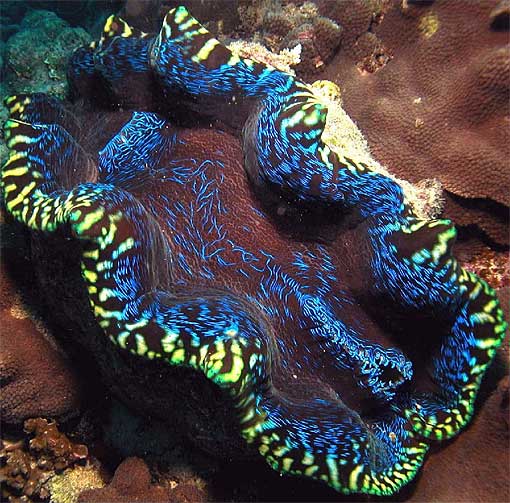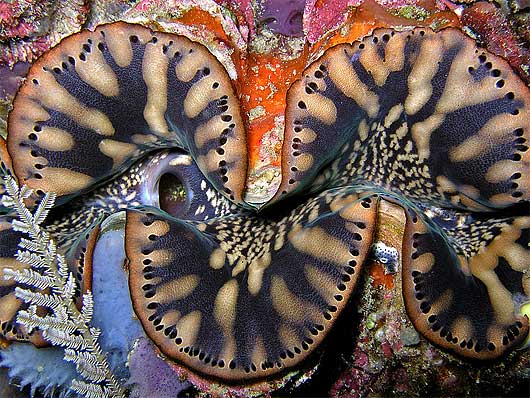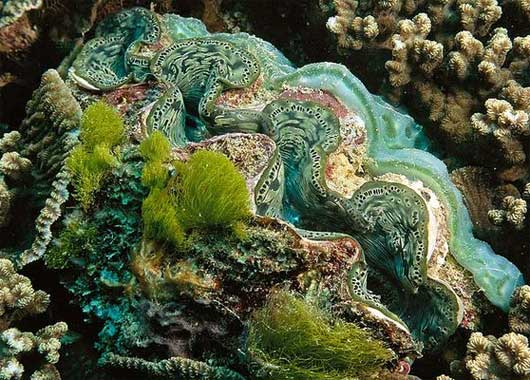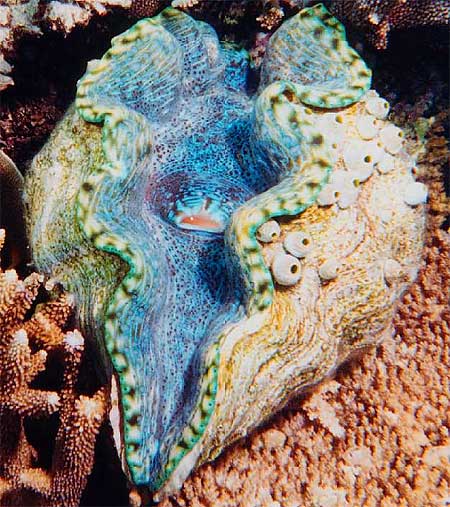Giant Clam – Not a Man-Eater

The giant clam is a carnivorous invertebrate that can live over 100 years in the wild. They only get one chance to find themselves a habitat or home as once they fasten themselves to a spot on the reef, that is where they remain for their entire lives. Many are very colorful, often with blue-green, fluted mouths.

The giant clam is a bottom dwelling mollusc. It is in fact the largest mollusc on the planet and can reach up to 4 feet (1.2 meters) in length and up to 500 lb (227 kg) in weight! They reach such huge proportions by consuming sugars and proteins constantly as they act as home to billions of algae who produce this food for them. The algae choose the clam as a home because they provide them with safety and access to sunlight for photosynthesis.

Despite the wild myths and legends, the giant clam is no man-eater. South Pacific legend has tales of giant clams lying in wait to trap swimmers and swallow them whole! There is no evidence of one ever capturing a man. In fact, if they’re looked at biologically, we can see that the muscles they use to close their shell move far too slowly to capture a swimmer. The clam would choose to retreat into its own shell if it saw a human because you’re scarier to them than they are to you. It poses no threat whatsoever to humankind.

The adductor muscle of the giant clam is considered a culinary delicacy. Due to this the clam has become vulnerable in some regions as it has been harvested too frequently.
The giant clam is a hermaphrodite which means it produces both eggs and sperm. They cannot self fertilize but this feature means they can mate with any others as each one is multi-gender. They cannot move as we already know so their reproductive method is known as broadcast spawning. Broadcast spawning means they release their eggs and sperm into the waters and a transmitter substance known as “Spawning Induced Substance” lets other clams become aware of the release.
This amazing and intriguing sea dweller certainly doesn’t deserve its man-eater reputation. They have also been farmed and used as decorations.
